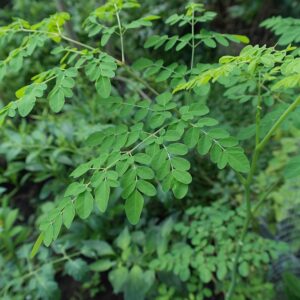Succulent Plants: Enduring Beauties of the Desert
succulent plants, succulent care, types of succulents, benefits of succulents, popular succulent examples, desert plants, drought-tolerant plants, easy-care plants, houseplants, indoor plants, outdoor plants
Succulent Plants: Nature’s Resilient Elegance
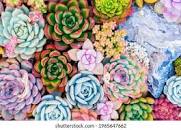
In the realm of greenery, succulent plants stand out as nature’s architectural wonders, captivating enthusiasts with their unique charm and remarkable adaptability Succulent Plants: Nature’s Water Warriors
In the heart of unforgiving deserts, amidst scorching heat and parched landscapes, a resilient group of plants thrives succulents. These botanical wonders have mastered the art of water conservation, transform themselves into living reservoirs and showcase nature’s exquisite ingenuity.
Defining Succulent Plants: Reservoirs of Life
Succulent plants, scientifically known as Succulents, derive their name from the Latin word ‘sucus,’ meaning juice or sap. These plants have evolved exceptional water storage capacities in their leaves, stems, and roots, enabling them to thrive in arid environments. The defining characteristic of succulents is their ability to retain water, making them resilient to dry spells that would spell doom for other plant varieties.
Fascinating Facts about Succulents
- Water-Storing Mastery: Succulents’ thick, fleshy leaves and stems serve as reservoirs, allowing them to endure prolonged periods of drought.
- Global Diversity: Succulents span a vast array of species, from the iconic Aloe Vera to the visually stunning Echeveria, each with its unique adaptation to various climates.
- Survival Specialists: The ability to thrive in harsh conditions has earned succulents the moniker of “survival specialists,” showcasing nature’s brilliance in adaptation.

Advantages of Cultivating Succulents
Succulents offer a plethora of benefits beyond their aesthetic appeal. Their ability to purify the air by removing harmful pollutants makes them natural air fresheners for your home or office. Additionally, many succulent species possess medicinal properties, offering a natural approach to health and wellness.
- Drought Tolerance: Their ability to store water makes them highly tolerant of dry conditions, requiring minimal watering.
- Low Maintenance: Succulents are generally low-maintenance plants, requiring minimal care and attention.
- Adaptability: They can thrive in a variety of environments, from sunny windowsills to well-draining outdoor gardens.
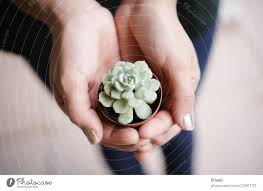
- Aesthetic Appeal: Their diverse shapes, colours, and textures add visual interest to any space.
- Air Purifiers: Many succulents, such as snake plants and aloe vera, help purify the air by removing pollutants.
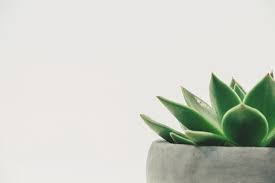
- Indoor Elegance: Many succulents thrive indoors, adding a touch of natural beauty to homes, offices, and even classrooms.

- Air Purification: Succulents, like the Snake Plant and Aloe Vera, contribute to indoor air quality by naturally filtering and purifying the air.
Examples of Popular Succulent Plants
The world of succulents offers a vast array of fascinating species, each with its unique charm:
- Aloe Vera (Aloe barbadensis miller): Known for its soothing gel, Aloe Vera is a popular

Aloe Vera succulent with long, pointed leaves and minimal care requirements. Renowned for its medicinal properties, aloe vera boasts plump, green leaves that store a soothing gel used for various skin care applications.
- Echeveria: These rosette-shaped succulents come in a myriad of colours, creating stunning arrangements in gardens and containers.
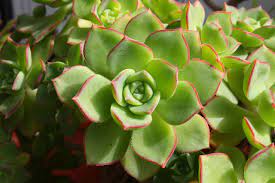
Echeveria: - Sempervivum (Hens and Chicks): Characterized by tight rosettes and prolific propagation, Hens and Chicks are hardy succulents ideal for beginners.

Sempervivum - Crassula ovata (Jade Plant): Recognized for its vibrant green leaves, the Jade Plant is a symbol of prosperity and good luck. This beloved succulent features thick, oval-shaped leaves that bring a touch of elegance to any indoor space.

Crassula ovata (Jade Plant) - Cacti: These iconic succulents are known for their spines, ribs, and diverse shapes, ranging from towering saguaros to miniature moon cacti

- Snake Plant (Sansevieria trifasciata): With its upright, sword-like leaves, the snake plant adds a modern touch to homes and offices.

Growing and Caring for Succulent Plants
Succulents are relatively easy to grow and care for, making them ideal for novice plant enthusiasts. Here are some essential tips for cultivating these resilient plants:
- Choose the Right Pot: Select a pot with drainage holes to prevent waterlogging, which can lead to root rot.
- Use Well-Draining Soil: Opt for a well-draining potting mix specifically designed for succulents and cacti.
- Provide Bright Light: Most succulents thrive in bright, indirect light. Avoid direct sunlight, which can scorch their delicate leaves.
- Water Sparingly: Water succulents deeply but infrequently, allowing the soil to dry out completely between waterings.
- Monitor for Pests and Diseases: Inspect succulents regularly for signs of pests or diseases, and take appropriate action if necessary.
Conclusion: Embrace the Succulent Splendor
In conclusion, succulent plants offer a captivating blend of beauty and resilience. Their ability to thrive with minimal care, diverse aesthetics, and air-purifying qualities make them a delightful addition to any green space. Whether you’re a seasoned gardener or just beginning your plant journey, succulents beckon with their unique charm and countless possibilities. So, embrace the succulent splendour and witness nature’s artistry unfold in your own home


